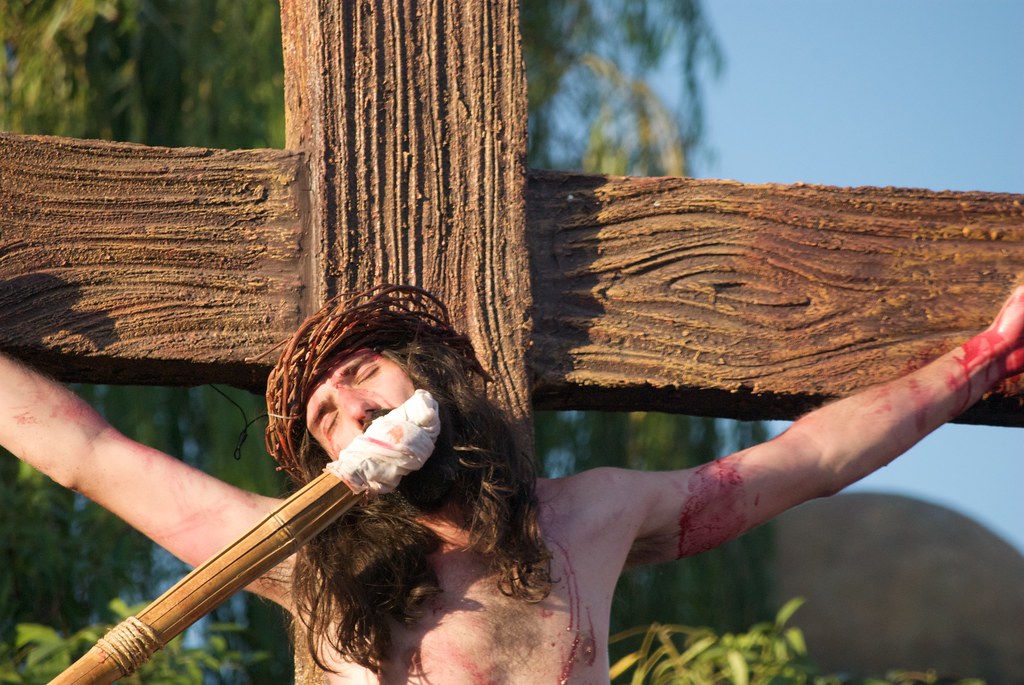|
What the Church calls Good Friday converged with Passover this year. It was Jesus/Yeshua who brought fullness to the meaning of Passover as the true Passover Lamb, and His death and resurrection is a type of exodus. The sacrifice of Jesus, the Passover Lamb, is what took away the sins of the world and provided eternal life for those who would accept what He did. Through crucifixion, burial and resurrection, Jesus crossed over to the other side of the grave. Like Jesus, we who confess Him as Lord must undergo our own Passover and exodus—death and resurrection. "Or don't you know that all of us who were baptized into Christ Jesus were baptized into His death? We were therefore buried with Him through baptism into death in order that, just as Christ was raised from the dead through the glory of the Father, we too may live a new life." (Romans 6:3-4)
As the Passover Lamb, selected by Father God, Jesus knew the full extent of what was expected of Him. The disciple John writes about this: "It was just before the Passover Feast. Jesus knew that the time had come for Him to leave this world and go to the Father. Having loved His own who were in the world, He now showed them the full extent of His love." (John 13:1) He demonstrated His love in every detail of His suffering and made provision for us to be healed, protected and saved through His broken body and blood. At the Passover Seder there are four cups of wine which represent the "I Will" statements in Exodus 6:6-7. They are referred to as (1) the cup of blessing, (2) the cup of judgment, (3) the cup of redemption, and (4) the cup of Elijah. At the last meal with His disciples, Jesus described the cup of redemption. "This cup is the new covenant in my blood, which is poured out for you." (Luke 22:20) Eventually, the redemption cup found its way into the traditional communion service in Christianity. It is a reminder to us that God accomplished our redemption through the blood of the Lamb—the central theme of the Passover. After the "last supper," Jesus went to the Garden of Gethsemane where He prayed. He began to understand the fullness of what was expected of Him and prayed, "My Father, if it is possible, may this cup be taken from me. Yet not as I will, but as You will." (Matthew 26:39) The cup did not pass from Him. He had to drink the full cup of redemption. In his book, Paid in Full, Rick Renner points out that when Jesus arrived at Golgotha He was offered "vinegar mingled with gall." (Matthew 27:34) The gall was a narcotic to help alleviate the pain of the execution. While Jesus was dying on the Cross, He was offered vinegar and gall again. (Matthew 27:48) Both times He refused the offer. As Rick Renner said, "He knew He was to fully consume the cup the Father had given Him to drink." And so, He did. Jesus endured the cruelest, most barbaric form of torture that could have been used before He died. All of us were redeemed with the "precious blood of Christ, a lamb without blemish or defect." (1 Peter 1:19) Our Passover Lamb endured the Cross "for the joy set before Him." (Hebrews 12:2) The truth is that because Jesus overcame death, we receive the benefits of His suffering. Jesus drank the whole cup of suffering and completed the work of redemption so that we can share in His death and resurrection and have life everlasting with Him. Hallelujah! |
Joan E. MathiasCategories
All
Archives
July 2024
|

 RSS Feed
RSS Feed